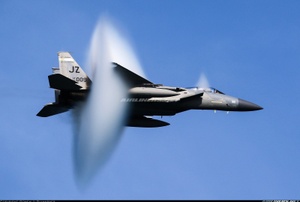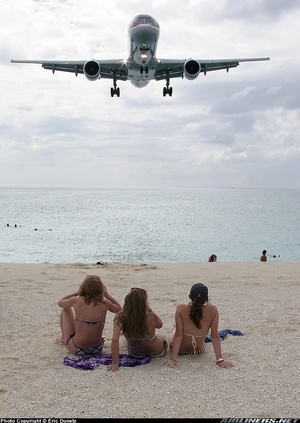Piper Cub
Details
Country of Origin
United States of America
Type
Two seat light aircraft
History
The simple and economical Cub is one of the most well loved light aircraft of all time, and helped make flying an affordable pastime for thousands of pilots in the years surrounding World War 2.
The Piper Cub began life as the Taylor E-2, designed by C.G. Taylor. In the middle of 1930, his company, Taylor Brothers Aircraft Corporation, went bankrupt. Businessman William Piper, who had made large profits from the oil industry, purchased the assets of the company and formed Taylor Aircraft Company with C.G. Taylor as the Chief Engineer.
Mr. Piper wanted to produce a simple and economic training aircraft, and the result was the E-2. The prototype was powered by a tiny 15kW (20hp) Brownbach Tiger Kitten engine. The aircraft was grossly underpowered with this engine, but at least, as Tiger Kitten equals Cub, it was the source of the model name for the E-2. After the Tiger Kitten had been replaced by a Salmson D-9 engine, real flight was finally achieved. However, as this French engine was built to metric sizes, the new 28kW(37hp) Continental A-40 was installed in the second E-2, and with this engine the Taylor E-2 Cub was certified on June 15 1931.
The company continued building the E-2 under the Taylor banner from 1931 to 1936, 348 being built in total.
While C.G. Taylor was ill, Walter Jamouneau reworked the E-2 Cub in early 1935, and the new type was named the J-2 Cub. It featured a revised tail shape, a fuselage with a faired-in rear turtledeck and a closed cockpit, a new airfoil wing with rounded wingtips, a redesigned cowling and a wider track undercarriage. Mr. Taylor was not happy with these developments and therefore decided to leave the company to form Taylor-Young Company.
The first experimental J-2 was a conversion of an E-2 and first flew in early 1935. The first production aircraft followed in December the same year. The aircraft was powered by the 28kW (37hp) Continental A40-3.
Effective November 1 1937 the company name was changed to Piper Aircraft Corporation, while continuing production of the J-2.
During 1936-37, the J-2 was improved and updated, resulting in the J-3 Cub. The affordable J-3 became a runaway sales success and several thousand were sold before the USA's entry into WW2. From then on, all J-3 production was for the US Army Air Force, originally as the O-59 which quickly became the L-4. Also the US Navy ordered the aircraft, as the NE-1.
Prewar Piper also built the J-4 Cub Coupe with side by side seating and the three seat J-5 Cub Cruiser.
Postwar Piper reverted to civilian production with the J-3 later becoming the PA-11 Cub Special. Late build PA-11s were powered by a 65kW (90hp) Continental C-90 and had increased range. The PA-12 Super Cruiser has seating for three and a more powerful Lycoming O-235 engine, while the four seat PA-14 Family Cruiser formed the basis for the Super Cub.
Powerplants
J-3C-65 - One 50kW (65hp) Continental A-65-1 flat four piston engine driving a two blade fixed pitch propeller.
PA-12 - One 75kW (100hp) Lycoming O-235 flat four.
Performance
J-3C-65 - Max speed 148km/h (80kt), typical cruising speed 132km/h (71kt). Initial rate of climb 450ft/min. Service ceiling 12,000ft. Range 402km (217nm).
PA-12 - Max speed 183km/h (99kt), normal cruising speed 170km/h (90kt). Service ceiling 12,600ft. Range 580km (313nm).
Weights
J-3C-65 - Empty 290kg (640lb), max takeoff 500kg (1100lb).
PA-12 - Empty 430kg (950lb), max takeoff 795kg (1750lb).
Dimensions
J-3C-65 - Wing span 10.75m (35ft 3in), length 6.79m (22ft 3in), height 2.03m (6ft 8in). Wing area 16.6m2 (178.5sq ft).
PA-12 - Wing span 10.83m (35ft 6in), length 6.74m (22ft 1in), height 2.08m (6ft 10in). Wing area 16.7m2 (179.3sq ft).
Capacity
Typical seating for two in tandem in the J-2 and J-3 Cub, J-4 Cub Coupe and PA-11 Cub Special, three in the J-5 Cub Cruiser and PA-12 Super Cruiser, and four in the PA-14 Family Cruiser.
Production
Production includes 348 E-2s, 1169 J-2s, 20056 J-3s (including 5677 military O-59, L-4 and NE), 1251 J-4 Cub Coupes, 1506 J-5 Cub Cruisers, 1541 PA-11 Cub Specials, 3759 PA-12 Super Cruisers and 238 PA-14 Family Cruisers.
Related Links
Piper Cub
The backbone of this section is from the The
International Directory of Civil Aircraft by Gerard Frawley
and used with permission. To get your own copy of the book
click here.


















